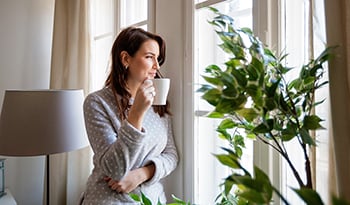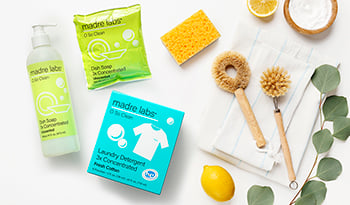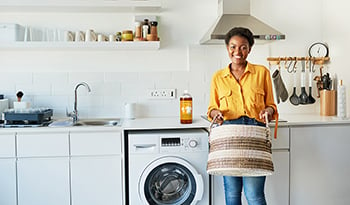How to Keep Your Home Green and Clean in 3 Easy Steps
DISCLAIMER:This blog does not intend to provide diagnosis...
- In this article:
- 1. Clean the Air
- 2. Switch to Natural Cleaning Products
- 3. Prevent Toxins from Accumulating in the Home
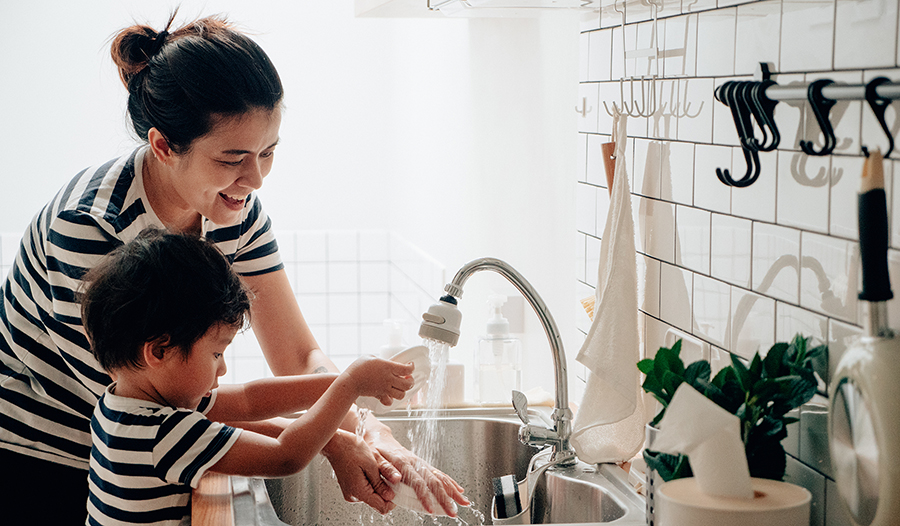
In my practice, the word “clean” implies that something is not only free of dirt and germs but that it is also free of chemicals and byproducts that can harm human health. It’s a simple distinction, but you might not believe how easy it is to accidentally buy cleaners that hurt you and your family’s well-being.
Since the 1970s, thousands of new chemicals have been introduced into our environment—over 87,000, to be exact. Many of these chemicals have not been studied for their impact on human or planetary health. The few hundred chemicals that have been studied demonstrated that a significant number of artificial additives in cleaning products are linked to an increased risk of developing cancer. Additionally, many of these compounds are endocrine disruptors that interrupt hormone signaling in both humans and other living species. Because hormones play important roles in regulating the immune, reproductive, and nervous systems, even minor changes in hormone levels can have profound impacts on health.
Thankfully, there are effective ways to minimize contact with these harmful ingredients. With these three tips, you can keep your home sparkling clean and amplify the health of those who live in it. It’s an act of preventive medicine that will pay off for your family in the long run.
1. Clean the Air
Many people forget that the air we breathe is a major source of dust, allergens, pollutants, viruses, and bacteria. These particles can contribute to respiratory illness and worsen allergy symptoms at a minimum. Increasingly, we’re learning that high levels of air pollutants impact health so profoundly that they can shorten your lifespan, even at low levels.
This is because air pollutants interfere with lung function, oxygen utilization, and increase toxic burden on our emunctory system—the organ system in the body that’s responsible for detoxification (the kidneys, skin, gastrointestinal system, and more). For these reasons, it’s vitally important to clean the air in your home regularly—just as you would clean any other surface to protect your health.
Household air is often recirculated multiple times per day. Since the 1970s, when home insulation became more advanced, much of the air inside a home, office, or apartment does not get exchanged with outside air. This means that we breathe the same air over and over throughout a 24-hour cycle. This is good news when it comes to filtering air, however, because installing just one filter is enough to make a difference in this cycle.
One of the best ways to clean the air in your home is to use what’s called a True HEPA (high-efficiency particulate air) filter. HEPA filters work by pulling the room air through a vent and forcing it through a fine filter multiple times a day. The filter pulls out pollen, dust, and other fine particulate matter that can harm health.
I recommend that my clients keep a filter in the rooms they spend the most time in. For most folks, this includes the bedroom, living room, and home office. You can save money by buying one filter and moving it around the home during the day depending on what room you’re in. If you don’t want the hassle, just buy two or three that can stay put so that they’re there when you need them.
Additionally, you can freshen up indoor air by opening a window for a few minutes once per day to allow new air in. If you want to use a scented spray to make room air feel less stale, make sure you’re reaching for room fresheners that contain antimicrobial essential oils as opposed to artificial perfumes, which contain chemicals that can irritate people with allergies and increase the toxic burden on our liver and lungs.
2. Switch to Natural Cleaning Products
Many of my clients are surprised to hear that they can use common kitchen items to clean in a non-toxic way. For example, you can use:
- Vinegar instead of window cleaner to clean glass
- Baking soda instead of toilet cleaners or scrubs to clean tough areas
- Castille soap instead of floor cleaner to make wood and surfaces shine
Additionally, there are a number of green cleaning products that you can buy which contain only natural ingredients and leave out the harmful chemicals. They clean just as well as the brands you might be used to. You can also rest a bit easier knowing that you’re helping to keep the environment healthy with your purchase, too.
Using natural products prevents you from introducing harmful chemicals in your home that ultimately have no place there. It also reduces the risk that your littlest family members could accidentally come into contact with toxic cleansers. Best of all, natural kitchen products like baking soda are usually less expensive than commercially available cleaning items, and you can use them for multiple purposes in the home. The benefits are endless!
3. Prevent Toxins from Accumulating in the Home
Keeping indoor air and surfaces clean involves way more than just filters and non-toxic cleaners. Reducing the buildup of toxins in the first place is the ultimate solution and a powerful act of preventive medicine. There are evidence-based changes you can make right now to reduce the toxic burden in your home.
First, don’t wear shoes in the home. The soles of shoes worn outside are actually a major source of contamination in settled house dust (SHD)—a form of dust extensively studied in the scientific literature as a major source of contamination in the home. Young children are the most vulnerable to toxic exposure through SHD because they spent much of their time on the floor and on carpets. Ask your family members and guests to remove shoes at the door to prevent harmful chemicals like polycyclic aromatic hydrocarbons (PAH) and more from entering your home and harming your family’s health.
If you spend lots of time outside barefoot, keep a non-toxic soap and a bit of water by the door to wash feet and dry them before entering the home. The same goes for your pets! Keep some pet soap by the door to wash off the pads of your furry friend’s feet before entering the house after going in the yard or on a walk. Even rinsing with water is better than nothing.
Second preventative tip: vacuum smarter by using a vacuum cleaner with a HEPA filter installed. This prevents the vacuum from expelling dust into the air by capturing most of it in the filter first. You don’t want SHD being thrown into the air more than necessary since this will increase the number of toxins you breathe in.
Last tip: practice good bed hygiene by showering before sleep and washing sheets and curtains weekly in hot water. This prevents pollens from building up and contributing to allergy symptoms. Additionally, it prevents you from bringing toxins you encountered while out in the world back into your bed. It goes without saying that you should choose to clean yourself and your sheets with non-toxic body soaps and laundry detergents.
With these tips, you’ll reduce the number of harmful products in your home, allowing you to keep a clean and healthy space.
References:
- Brunekreef B;Beelen R;Hoek G;Schouten L;Bausch-Goldbohm S;Fischer P;Armstrong B;Hughes E;Jerrett M;van den Brandt P. Effects of Long-Term Exposure to Traffic-Related Air Pollution on Respiratory and Cardiovascular Mortality in the Netherlands: The NLCS-AIR Study. Research report (Health Effects Institute). 2012;(139).
- Cohen L, Jefferies A. Environmental Exposures and Cancer: Using the Precautionary Principle. ecancermedicalscience. 2019;13. doi:10.3332/ecancer.2019.ed91
- Di Q, Wang Y, Zanobetti A, et al. Air Pollution and Mortality in the Medicare Population. New England Journal of Medicine. 2017;376(26):2513-2522. doi:10.1056/nejmoa1702747
- Mahler BJ, Metre PCV, Wilson JT, et al. Coal-Tar-Based Parking Lot Sealcoat: An Unrecognized Source of PAH to Settled House Dust. Environmental Science & Technology. 2010;44(3):894-900. doi:10.1021/es902533r
- Teen Girls’ Body Burden of Hormone-Altering Cosmetics Chemicals. EWG. https://www.ewg.org/research/teen-girls-body-burden-hormone-altering-cosmetics-chemicals#.Wg33jlUrJQJ. Published 2015. Accessed June 22, 2020.

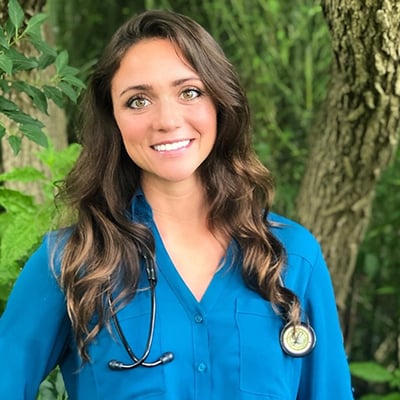 By Dr. Kate Henry, N.D.
By Dr. Kate Henry, N.D.
